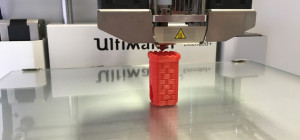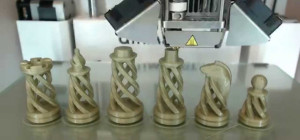 3D printing is making a huge impact in the medical industry. Innovations in technology and treatments are revolutionizing the very way we take care of people, though there are several practices that are outdated or fall short of the goal to improve or save lives even today. With the 3D printers, the future of health care is advancing in several ways, both traditional as well as dramatically new. With advancements in technology, the universe of medical applications is entering a phase of rapid growth.
3D printing is making a huge impact in the medical industry. Innovations in technology and treatments are revolutionizing the very way we take care of people, though there are several practices that are outdated or fall short of the goal to improve or save lives even today. With the 3D printers, the future of health care is advancing in several ways, both traditional as well as dramatically new. With advancements in technology, the universe of medical applications is entering a phase of rapid growth.
3D Printing Offers an Option of Personalized Medicine
In the context of manufacturing, 3D printing for medical applications is unique when you compare it to industries like automotive, aerospace, and others. You may ask why. The answer is quite obvious. It's the human element present in health care applications where cost is a secondary concern to an outcome like saving a life or improving the quality of the existing ones.
There are chiefly two different interesting sectors where 3D printing can cast an impact on millions of lives:
- Surgery
- Treatment of comparatively intractable health conditions
The ability to produce customized solutions is one of the prime advantages of 3D printing. Unique parts are quite costly in nature, but when the printers are combined with 3D imaging strategies, this turns up as a comparatively more viable solution.
Revolutionizing Surgical Practices
Surgeons find that usage of this technology goes a long way in reducing operating time, bringing down risks from complications and errors, and producing a better outcome for patients. However, in the operating rooms of today, the 3D printed applications are somewhat limited.
The professional 3D printers now include photo curable resins of different textures, flexibility, and transparency. Thus, before the procedure is undertaken, the surgeons can plan surgeries with CT scan data of patient's blood vessels, bones, and other organs. For the operations that involve drilling or cutting into skeletal structures like knee replacement, jaw surgeries, and other procedures, 3D printing is creating the best fit through custom tools and guides.
Through 3D modeling technology and medical imaging, the doctors can also use the 3D printers for the creation of temporary tools. These tools remain affixed to the skeletal structure of the patient to provide an accurate blueprint. This aids in reshaping bone structure to accommodate the standard sized implants. The custom printed drilling guides also ensure accurate placement of screws, thereby ensuring a perfect fit with the patient's body. In a decade, it's quite likely that the 3D printed models, as well as the custom surgical guides, will be standard for an array of procedures like:
- jaw surgery
- heart surgery
- hip and knee replacements
- shoulder operations
- cranial implants
- spinal treatments
More Treatment Options
An inspiring outcome from the expansion of 3D printed medical solutions is the chance to help patients who had little hope to be treated before. Regardless of whether it is financial constraints or other unique circumstances, millions of people today are unable to go for critical surgeries. In several cases, 3D printing is helping with getting rid of such obstacles.
A perfect example here is the case of prosthetic hands. Prosthetics often degrade from extensive usage and if a given patient is young, such a solution is absolutely impractical unless he or she has a completely functional limb to balance. 3D printing is changing this and that's taking place quite fast.
In the course of last two years, there has been a revolution in the count of customizable and functional prosthetic hands. The functional prosthetic hands are a possibility now, even for children who struggle through childhood (since the kids outgrow prosthetics in just a few months). People with a printer can now print them in less than 24 hours. Moreover, prosthetics can incorporate customized designs that are unique to each patient. Several kids today use hands that are modeled after their chosen superheroes.
The rush of healthcare ideas printed into reality is now in its infancy. We can expect the era of 3D printing to really break open when the medical students are trained to use this technology and consider it as an option while exploring the treatment options.
So, what's the biggest hurdle for 3D printing in the medical field?
It needs people to believe in the capabilities of this technology. As soon as a workforce of medical practitioners is trained in 3D printing, we can expect a revolution.
Information Shared By 3D Animation Company Icreate3d (http://www.icreate3d.com/)







